- Images
- Blog
- Tools
- Questar
- The Questar telescope
- Questar resource links
- Search for Questar info
- 172mm Focal Reducer
- Afocal adapter for point and shoot camera
- Camera adapter lengths
- Camera adapter threading
- Camera connection
- Camera focusing
- Custom counterweight
- Drift Alignment Joy
- Finder Eyepiece Compatibility
- The Questar Moon 1981
- Questar Powerguide II Battery Life
- Questar Zone, How to Service Videos
- Red Dot finder mount for Questar
- Questar Viewing Table
- Wedge mounts
- White light solar filters comparison
- How to
- Get started in astronomy
- Astro RaspberryPi Camera and kin, the ASIAir and StellarMate
- Blind Smart-phone Equatorial Wedge or GEM Polar Alignment
- Camera phone adapter
- Celestron FirstScope with equatorial tripod mount
- Coat Pocket Astrophotography
- Day-lapse Images of Earthshine on the Crescent Moon
- Dobsonian Carrying Case
- DSO Astrophotography without a Telescope
- DSO imaging without a star tracker
- Estimating image resolution
- Lunar Eclipse Photography
- Moon photography - a dozen ways to shoot the Moon
- Meteor shower photography & planning
- Matching image sensor size to telescope resolution
- Narrow band imaging with color cameras
- Planetary Image Workflow
- Print and Display Astrophotography
- Observing
- Events
- More
- About
- Contact
Coat Pocket Astrophotography
My affection for the miniature, lead straight to my interest in ultra-light astrophotography. I intend to push my boundaries and see just how portably I can configure an astrophotography kit that will take good images. High end camera phones are just beginning to be good enough to take recognizable photos at night. I've focused on point and shoot sized phones that can fit in a pocket. With 1" sensors and the ability to take long manual exposures, you can take night sky images worth printing.
My current kit is based on an update to a camera that I've had good experience taking nightscape images in the past. The Sony RX100 V has full manual controls and a 1" sensor with a crop factor of 2.7. This is one of the very smallest cameras with full manual controls. I've taken nightscape images with the first RX100. The updated camera has features that make make it even better for astrophotography including: BSI sensor for better low light capability, a full electronic shutter for vibration free bursts, screen that swivels to face the front, time lapse support, and tethered wireless live view remote control software for a smart phone or tablet.
Lonely Speck has a couple of articles that look at the astrophotography performance of the RX100 and other small cameras: Photographing the Milky Way with a Point and Shoot: A Five Camera Low Light Battle and Sony RX100 Series Astrophotography Review.
There are three configurations of different weights and capabilities that I use for camera lens based astrophotography:
- Hand held - The lightest kit is to use the camera hand held or resting on a sandbag for long exposures. Weight is less than 9 oz including unfilled sandbag and easily fits in a roomy pocket.
- Mini tripod - A mini-tripod and ball head gives more control and convenience adding 6 to 8 oz. Both can easily fit in a jacket pocket at a total weight of only 1 lb.
- Star tracking drive - a driven mount allows longer exposures and can add panning to time laps video. I use the very compact Vixen Polarie star tracker which weights about 2 lbs with a ball head. This extra weight requires a tripod with a larger stance. I use a ZOMEI Z699C Carbon Fiber Portable Tripod with Ball Head which weighs 2.5 lbs. With the camera the total weight is about 6 lbs and easily fits in a day pack with room left for dinner and a coat. At this point a larger mirrorless camera and lenses (e.g. Sony a6000 series) will give improved image quality with about 2 lbs. additional weight for a total of about 8 lbs.
A coat pocket kit with mini-tripod is the sweet spot for a small camera. Adding even a very compact tracking drive makes stepping up to a larger size higher quality APS-C mirrorless camera logical.
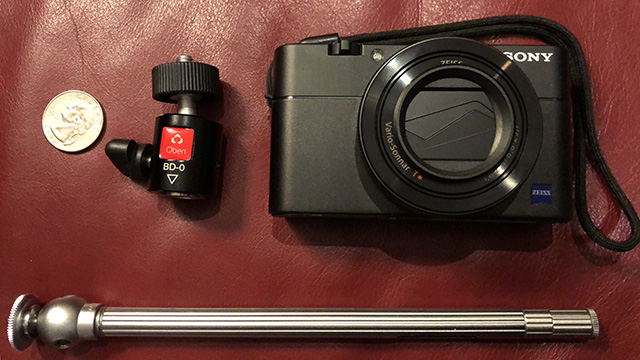
My coat pocket sized kit includes a tripod. Most mini tripods are designed for views near the horizon and have balance or clearance problems when aimed at the zenith. My solution combines the very light and rigid Minox Pocket Tripod with an Oben BD-0 Mini Ball Head. The combination ensures that the camera will be balanced on the small tripod no matter where I point it in the sky.
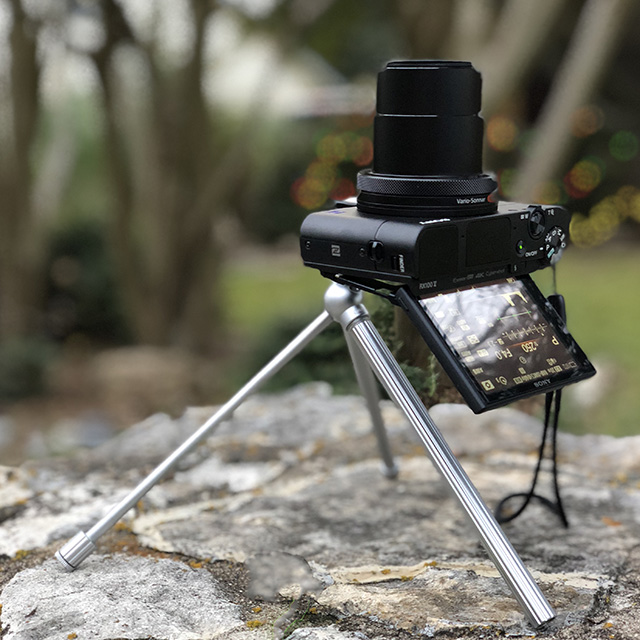
The first examples are all taken with the original RX-100 hand held with whatever support was handy:

A sunset conjunction of
Jupiter, Venus, and Mercury exposed f/4.9 at ISO 125 for 1.3 sec zoomed to
37.1 mm without tripod.
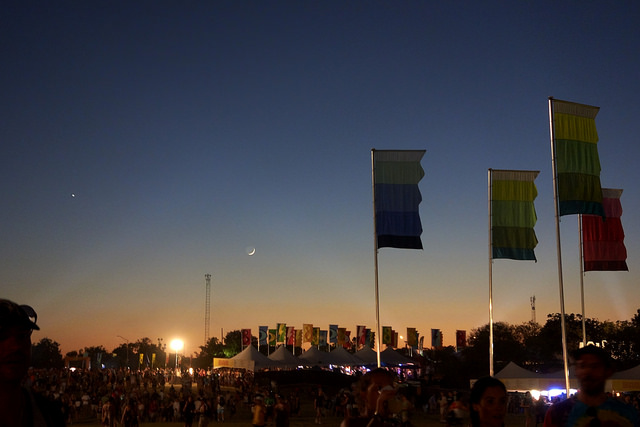
Venus and the Moon with earthshine
at the Austin City Limits Music Festival, exposed f/3.5 at ISO 800 for 1/13
sec zoomed to 20.6 mm without tripod.
The RX100 on a tripod:
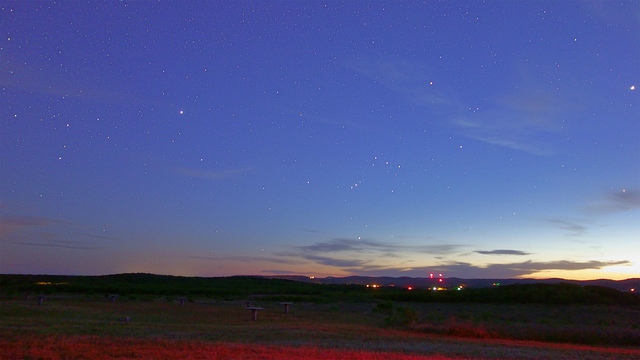
Canis Major and Orion at sunset
exposed f/1.8 at ISO 400 for 30 sec zoomed to 10.4 mm on a fixed tripod.
The next image is shot with the RX100 V on a tripod. This tiny camera doesn't have the reach of a super zoom. Other than the Moon, for astrophotography, reach requires a tracking mount. With the extra size and weight, I'm inclined towards an interchangeable lens camera with a larger sensor. The Moon image below is a processed stack of 18 images of the waxing gibbous Moon:

Waxing gibbous Moon exposed f/5.6 at ISO 100 for 1/200 sec zoomed to 25.7 mm from a fixed tripod. A 1:1 crop.
The Milky Way above the light dome from Burnet at Canyon of the Eagles with an RX100 exposed for 15 seconds at ISO 3200 f1.8 at 10.4mm on a fixed tripod.
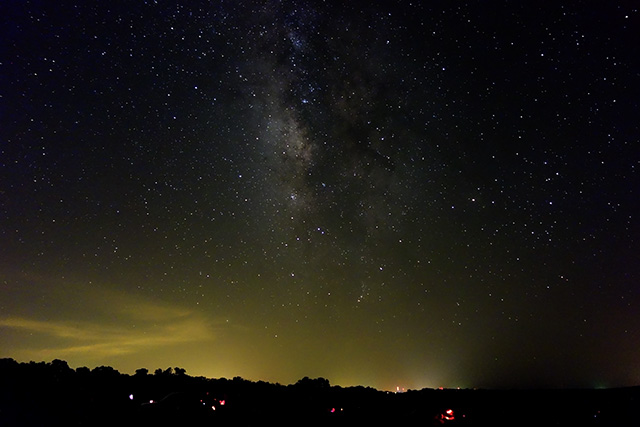
The constellation Orion with M41 taken with a Sony RX100 V on a Vixen Polarie for 1 hour of total exposure. This shot is take from inside Austin's light dome using an ICE LiPo filter to remove light pollution.
A 1:1 crop of Orion's sword from this image is below:
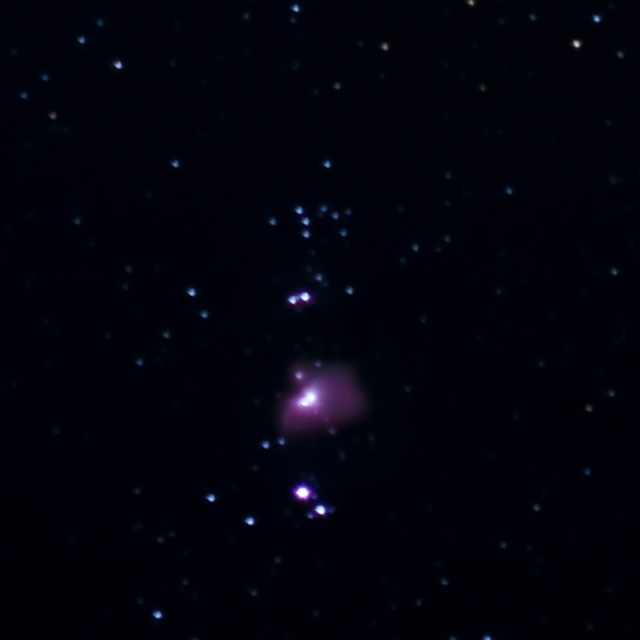
The time-lapse stack of a lunar eclipse below was captured with the help of the time-lapse app on the Sony RX100 V.
Content created: 2017-12-14 and last modified: 2020-10-12
Comments
![]() Submit comments or questions about this page.
Submit comments or questions about this page.
By submitting a comment, you agree that: it may be included here in whole or part, attributed to you, and its content is subject to the site wide Creative Commons licensing.

How to
Starter telescopes for beginners
Getting started in astrophotography?
Choose & setup a camera for astrophotography
Astro RaspberryPi Camera and kin, the ASIAir and StellarMate
Blind Smart-phone Equatorial Wedge or GEM Polar Alignment
Celestron FirstScope with equatorial tripod mount
Day-lapse Images of Earthshine on the Crescent Moon
DSO Astrophotography without a Telescope
DSO imaging without a star tracker
Overview & equipment for lunar eclipse photography
Framing and tracking a lunar eclipse
Moon photography - a dozen ways to shoot the Moon
Meteor shower photography & planning
Matching image sensor size to telescope resolution
Narrow band imaging with color cameras
Print and Display Astrophotography

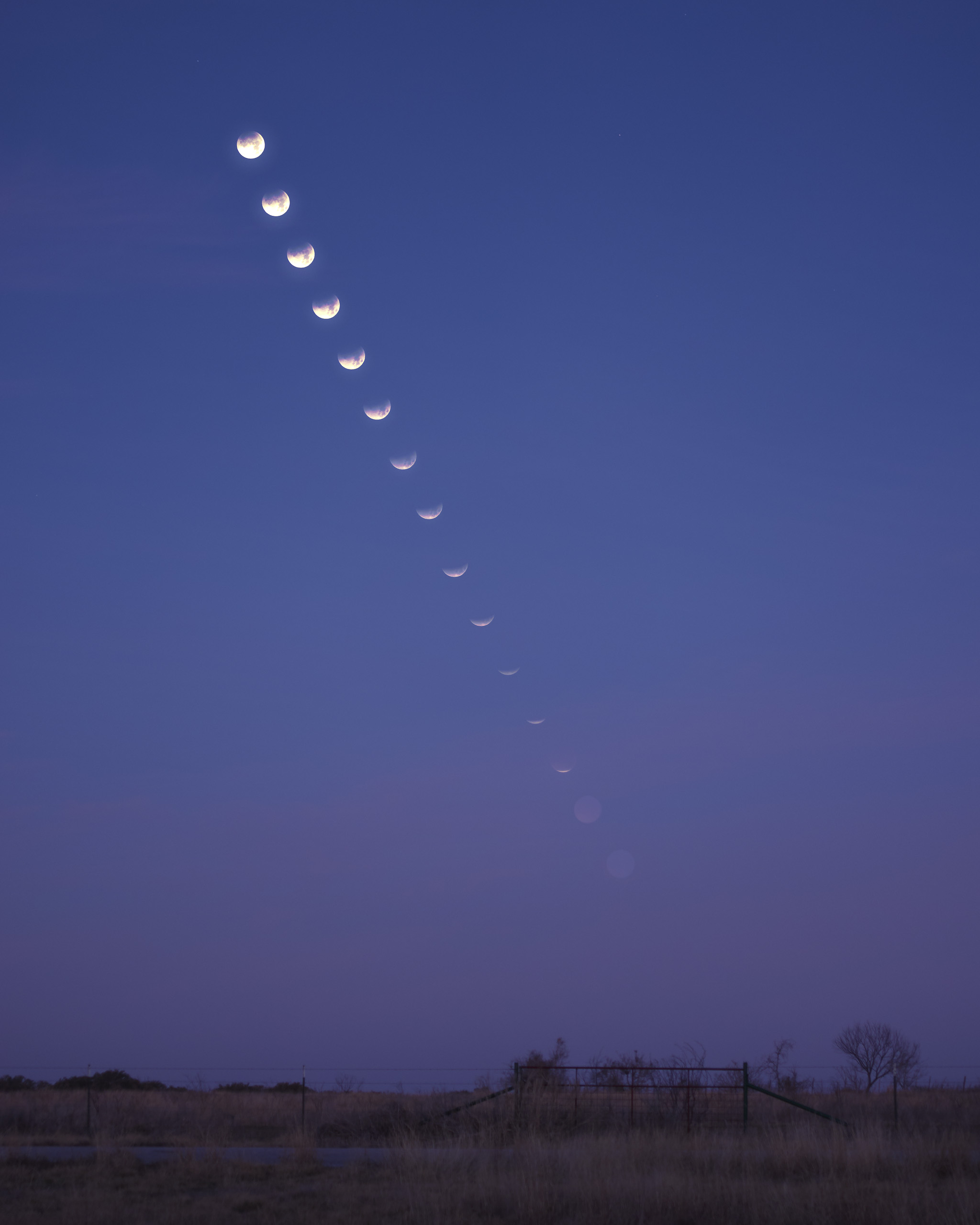

 Get started in astronomy
Get started in astronomy